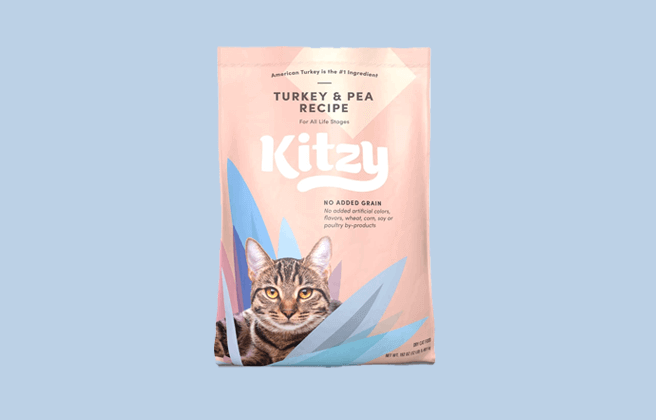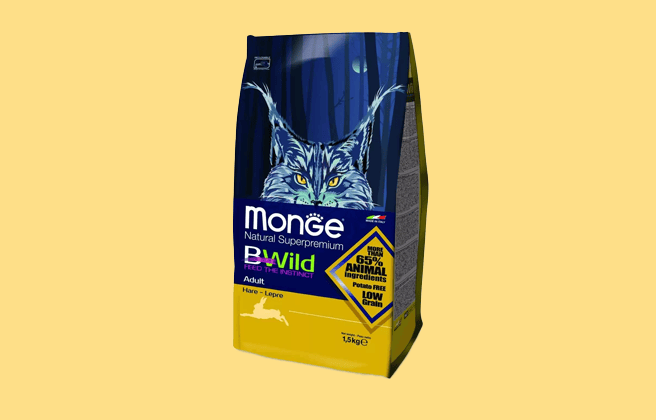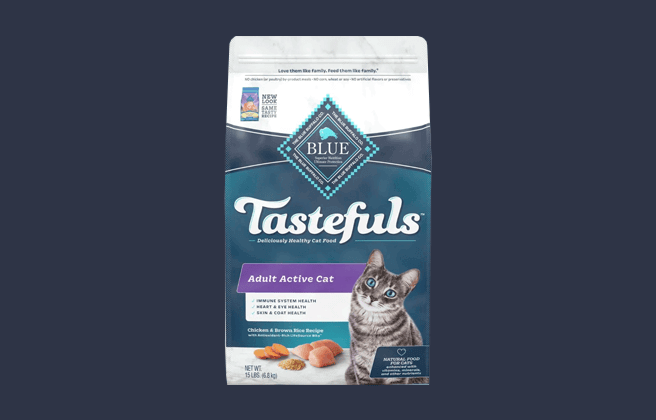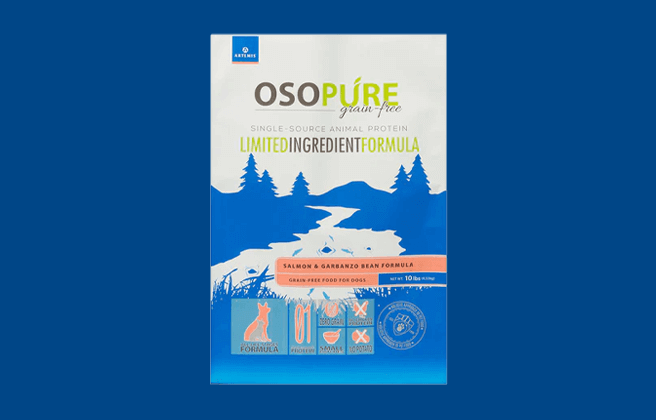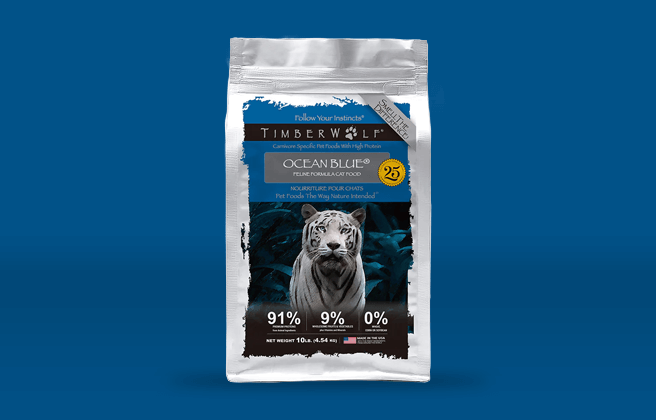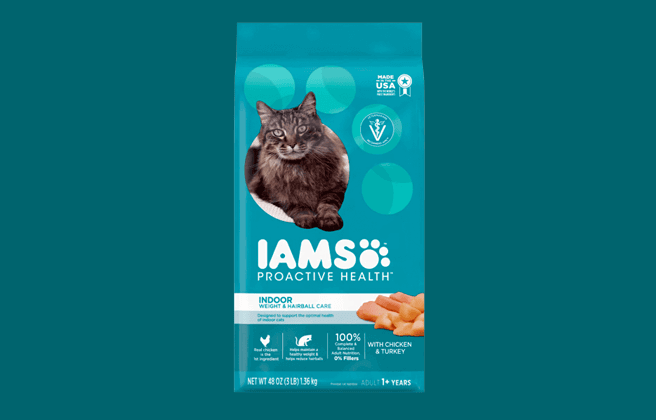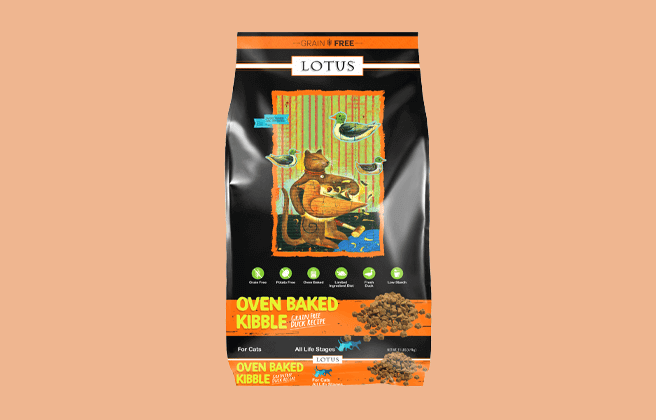
Our Verdict
Lotus Pet Foods dry product range is made of four recipes which all receive the Cat Food Advisor rating, 3.5 stars
This range of food lists the first ingredient as animal meat. Protein levels are average and plant-based protein is used which needs to be considered when evaluating diet requirements.
Pros
- Animal protein
- No potentially harmful ingredients
- Contains fish oil
Cons
- More than one controversial ingredient
- Contains plant based protein
- High carbohydrate level
- Limited range
The table below shows each recipe in the range including our rating and the AAFCO nutrient profile: Growth (kitten), Maintenance (adult), All Life Stages, Supplemental or Unspecified.
| Product line | Rating | AAFCO |
|---|---|---|
| Lotus Cat Kibble Chicken Recipe | 3.5 | A |
| Lotus Cat Kibble Duck Recipe | 3.5 | A |
| Lotus Cat Kibble Low Fat Recipe | 3.5 | M |
| Lotus Cat Kibble Sardine Recipe | 3.5 | A |
Save up to 35%
with Autoship
See discount in cart
Recipe and Label Analysis
Lotus Cat Kibble Duck Recipe was selected to represent the other products in the line for a detailed recipe and nutrient analysis.
Label and nutrient data below are calculated using dry matter basis.
Lotus Cat Kibble Duck Recipe
Estimated Dry Matter Nutrient Content
Protein
Fat
CarbsCarbohydrates
Duck, duck meal, peas, dried egg product, pork liver, tapioca, pea fiber, brewers dried yeast, sweet potato, ground flaxseed, sunflower oil, natural yeast flavor, calcium propionate, carrots, apples, salt, calcium sulfate, garlic, blueberries, pumpkin, spinach, taurine, salmon oil, iron sulfate, zinc sulfate, vitamin E supplement, niacin, copper sulfate, vitamin A supplement, manganese sulfate, thiamine mononitrate, potassium chloride, dicalcium phosphate, dried kelp, yucca schidigera extract, inulin, calcium pantothenate, pyridoxine hydrochloride, biotin, riboflavin supplement, vitamin B12 supplement, vitamin D3 supplement, calcium iodate, folic acid, sodium selenite, rosemary extract.
Fiber (estimated dry matter content) = 5.3%
Red denotes any controversial items
Ingredients Analysis
The first ingredient is duck. Duck is considered “the clean combination of flesh and skin… derived from the parts or whole carcasses of duck”. 1
Duck is naturally rich in the 11 essential amino acids required by a cat to sustain life.
The second ingredient is duck meal. Duck meal is considered a meat concentrate and contains nearly 300% more protein than fresh duck.
The third ingredient is peas which are a quality source of carbohydrates. And like all legumes, they’re rich in natural fiber.
However, peas contain about 25% protein, a factor that must be considered when judging the meat content of this cat food.
The fourth ingredient is dried egg product, a dehydrated form of shell-free eggs. Quality can vary significantly. Lower grade egg products can even come from commercial hatcheries – from eggs that have failed to hatch.
In any case, eggs are easy to digest and have an exceptionally high biological value.
The fifth ingredient is pork liver. This is an organ meat sourced from a named animal and thus considered a beneficial component.
The sixth ingredient is tapioca, a gluten-free, starchy carbohydrate extract made from the root of the cassava plant.
The seventh ingredient is pea fiber, a mixture of both soluble and insoluble dietary fiber derived from pea hulls. Aside from the usual benefits of fiber, this agricultural by-product provides no other nutritional value to a cat.
The eighth ingredient is brewers dried yeast, which can be a controversial item. Dried yeast contains about 45% protein and is rich in other healthy nutrients.
Fans believe yeast repels fleas and supports the immune system. Critics argue yeast ingredients can be linked to allergies.
This may be true, but (like all allergies) only if your particular cat is allergic to the yeast itself. In any case, unless your cat is specifically allergic to it, we feel yeast should be considered a positive addition.
From here the list goes on to include a number of other items. But to be realistic, ingredients located this far down the list (other than nutritional supplements) are not likely to affect the overall rating of the product.
This recipe contains one notable exception:
Taurine, an essential amino acid for cats associated with the healthy function of heart muscle and eye sight, and is crucial for maintaining good health in cats. We view the presence of taurine in this recipe as a positive addition.
Save up to 35%
with Autoship
See discount in cart
Nutrient Analysis
Based on its ingredients alone, the Lotus Cat Kibble Duck Recipe looks like an average dry product.
The dashboard displays a dry matter protein reading of 37.8%, a fat level of 16.7% and an estimated carbohydrate level of 37.6%.
As a group, the brand features an average protein content of 36.9% and a mean fat level of 15.8%. Together these figures suggest a carbohydrate content of 39.2% for the overall product line, alongside a fat to protein ratio of 42%.
This means this Lotus Pet Food dry range contains near-average protein and above-average carbohydrate and near-average fat, when compared to typical dry cat food.
Final Word
The Lotus dry product range provides a good source of quality protein with non-GMO fruits and vegetables. No added colors, flavors or preservatives.
Has Lotus Pet Foods cat food been recalled in the past?
No. Lotus does not appear to have had a product recall.
You can view a complete list of all cat food recalls since 2021 here.
To stay on top of any cat food product recalls, sign up for our free email alerts, here.
About
Lotus was created in 2003 by the owners of Centinela Feed and Pet, a pet specialty store in Los Angeles.
It sources ingredients primarily from the United States and Canada with a focus on produce grown or raised near its manufacturing locations.
Exceptions to this rule are green-lipped mussel, lamb, and lamb meal sourced from New Zealand. The vitamins and minerals are sourced from Europe, with the exception of biotin, which they buy from a supplier in India.
Lotus dry foods are manufactured in a bakery in Canada. The wet foods are made in a company-owned micro-cannery in California, where the foods are produced and packed in small batches.
Sources
Best cat foods
We uphold the highest editorial standards when creating the authoritative content pet parents rely on and trust.
Every piece of clinical content on the Cat Food Advisor is reviewed by our certified Veterinary Advisory Board, which consists of licensed veterinarians and medically certified specialists.
Our reviews are completely independent; we are not paid by any pet food company to promote their products favorably. We do not accept money, gifts, samples or other incentives in exchange for special consideration. For more information see our Disclaimer & Disclosure page.







